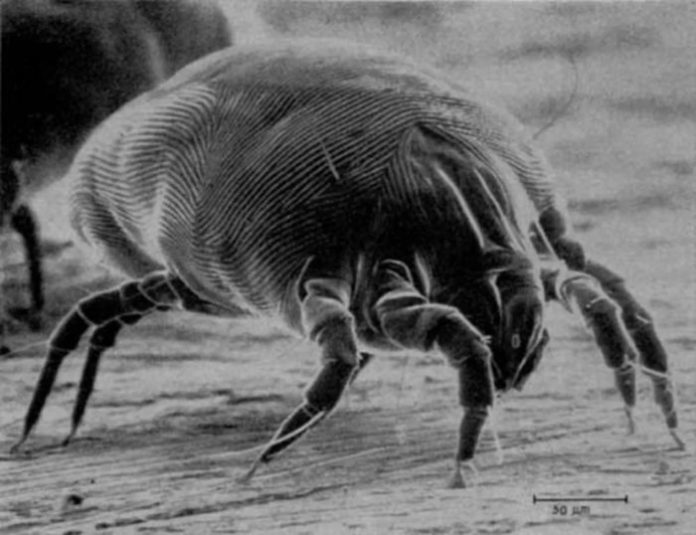This study is the first to provide specific information about the characteristics of dust mite proteins, and may help researchers uncover factors that lead to the development of dust mite allergy and assist in the design of better allergy therapies.
The results, partially funded by the National Institute of Environmental Health Sciences (NIEHS), the National Institute of Allergy and Infectious Diseases, and the National Institute of General Medical Sciences, appeared online Oct. 19 in the Journal of Allergy and Clinical Immunology.
“Allergy researchers have pondered what distinguishes an allergen from a non-allergen for years,” said NIEHS Staff Scientist Geoffrey Mueller, Ph.D., corresponding author of the paper. “There was anecdotal evidence in the field before, and it made sense to examine the organism that causes a lot of allergic sensitization in humans, the common dust mite.”
Mueller and his collaborators used two approaches to tackle the question. The first used whole body extracts of dust mites to measure the amount of proteins being made. As a group, the allergens were much more highly produced than non-allergen dust mite proteins.
The second approach involved Duke University scientist Michael Fitzgerald, Ph.D., who utilized a large-scale, mass spectrometry technique to measure the stability of many proteins at once. His team evaluated 656 non-allergens and 19 allergens, and found that the 19 allergens were statistically more stable than dust mite proteins in general.
“I am excited that the analytical methodology we spent so many years developing, turned out to be so useful in addressing this fundamental question about allergenic proteins,” Fitzgerald said.
The finding that dust mite allergens are more durable and more abundant than other dust mite proteins supports two hypotheses about how allergenic compounds stimulate an immune response in the body.
Mueller said one theory is that proteins that are more stable do not break down during the journey from the source, such as dust mite, cockroach, and ragweed pollen, to a person. Another possible explanation is that more stable proteins are harder for the immune system to digest, therefore initiating signals in the body that indicate they are dangerous particles.
Although the usual symptoms of sneezing, red or watery eyes, and nasal congestion, seen in allergies are unwelcome, they are, for the most part, lessened by prescription and over-the-counter allergy medications. However, for the millions of asthmatics who are allergic to dust mites, interacting with dust mite allergens can spur emergency room visits.
“Dust mite allergy is a risk factor for asthma, which is a disease of enormous public health importance in the U.S. and abroad,” said NIEHS Scientific Director Darryl Zeldin, M.D. “Studies such as this one, which enhance our understanding of the characteristics and biology of dust mite allergens, have significant potential to lead to development of new approaches that treat this condition.”
Source: NIH



















































